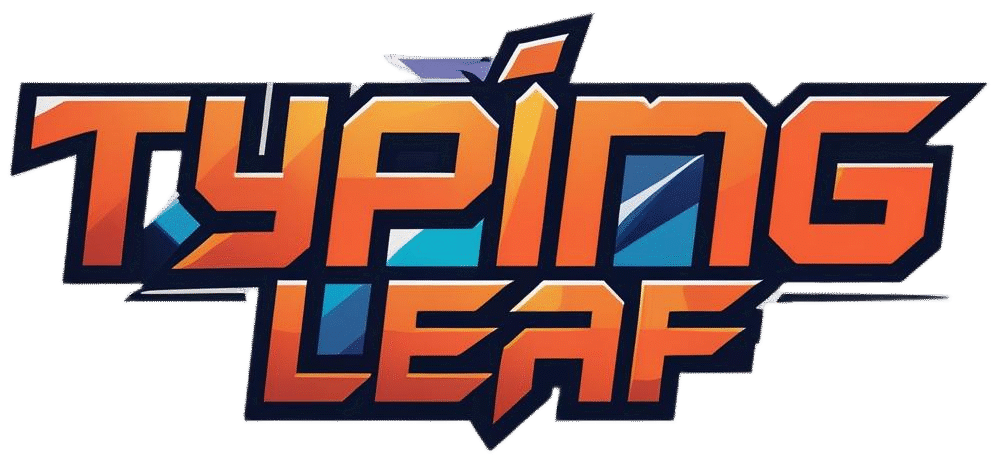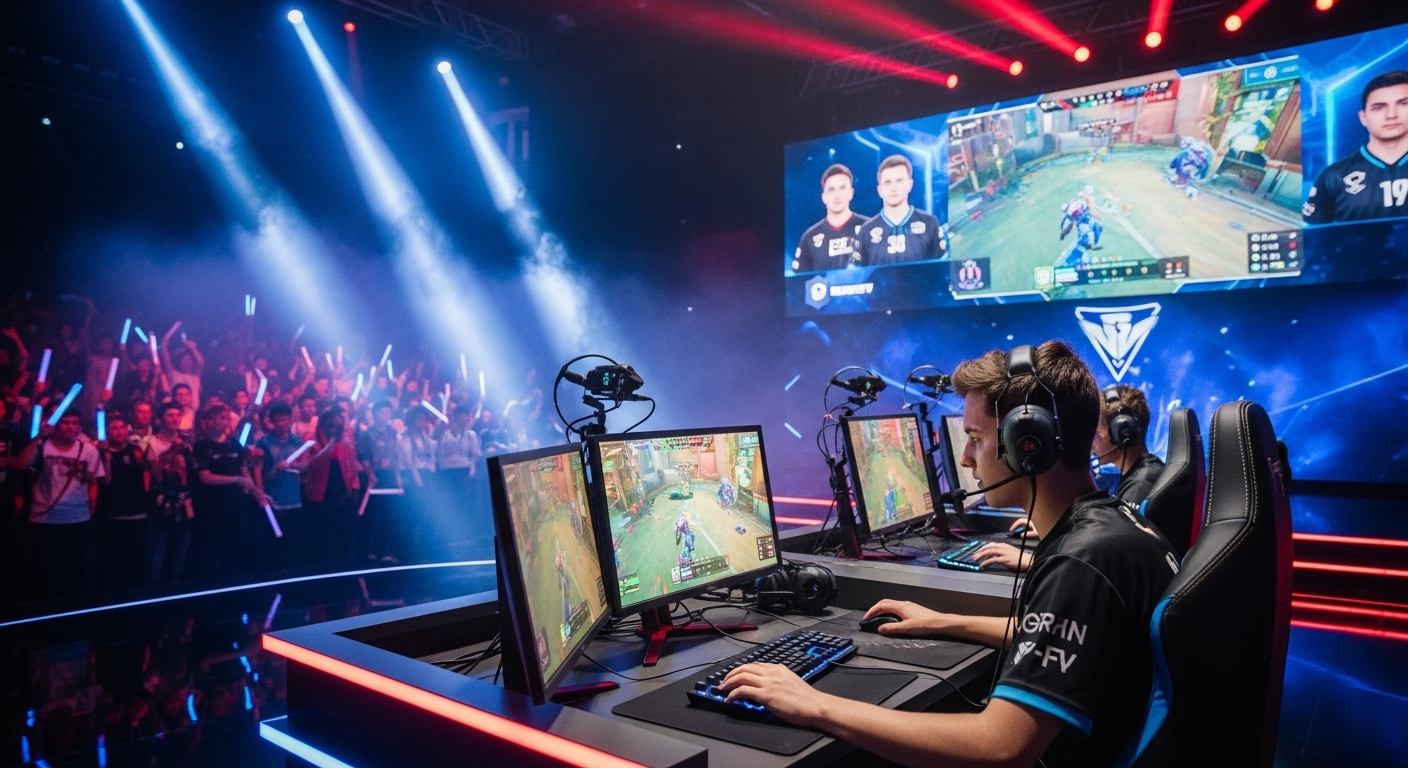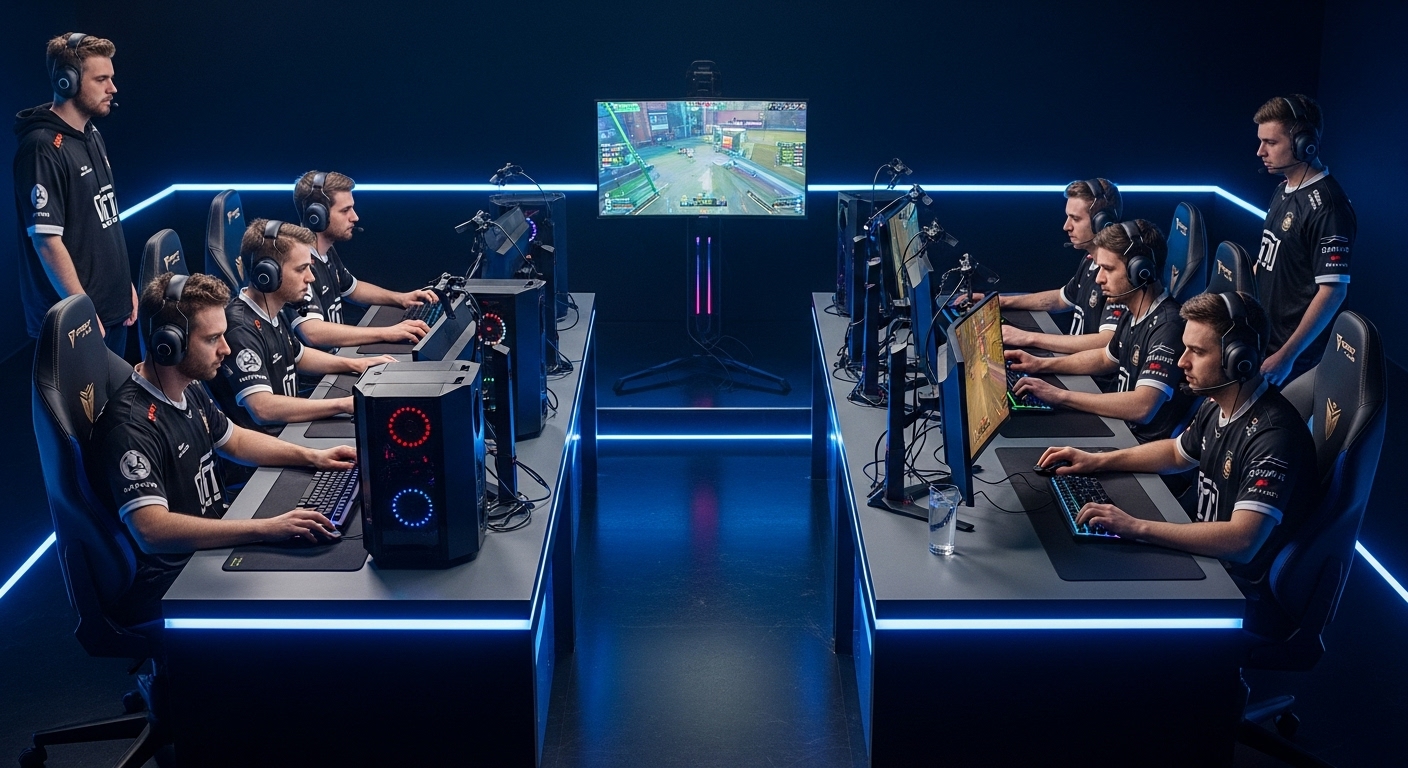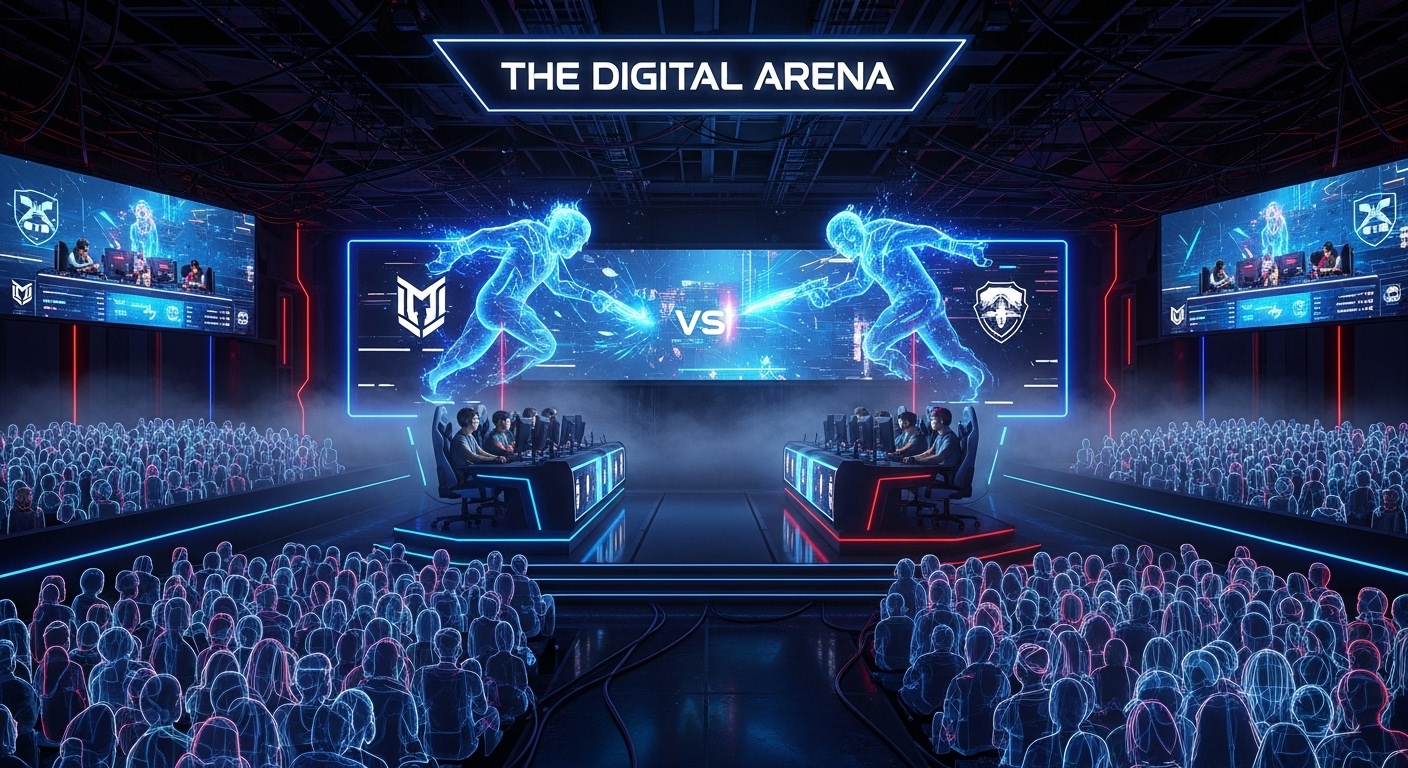Introduction
Over the past two decades, one of the most fascinating evolutions in entertainment and sports has been the rise of esports. Once seen as a niche hobby for gaming enthusiasts, esports has grown into a billion-dollar global phenomenon that combines technology, competition, and community in a way traditional sports never imagined. The concept of people competing in video games may have once sounded like a casual pastime, but today, esports tournaments fill entire arenas, draw millions of online viewers, and award prize pools that rival the largest traditional sporting events. The journey from small local gaming contests to international championships has been nothing short of extraordinary.
The Origins of Esports
The roots of esports can be traced back to the early 1970s, when video gaming itself was still in its infancy. The first recognized competitive gaming event took place in 1972 at Stanford University, where students competed in a game called Spacewar. The prize for the winner was a year’s subscription to a magazine, a modest reward compared to today’s massive payouts. During the 1980s, arcade gaming tournaments began gaining popularity, particularly with titles like Pac-Man and Donkey Kong. Players would challenge each other for high scores, and the competitive spirit that defines esports today was already forming.
As technology advanced, the 1990s brought networked gaming and the rise of the internet, allowing players to connect and compete without being in the same physical space. Games like Doom, Quake, and StarCraft laid the foundation for modern esports. The first major international tournaments emerged, and gaming communities began organizing around shared competitive experiences. The birth of broadband internet further fueled the scene, making it easier for players from different countries to test their skills against one another.
The Growth of Esports in the 2000s
The early 2000s marked a period of explosive growth for esports. Personal computers and gaming consoles became more accessible, and multiplayer online games started to dominate the market. Titles such as Counter-Strike, Warcraft III, and Dota began to shape the modern competitive landscape. During this era, professional gaming leagues began forming, including organizations that offered structured tournaments, sponsorships, and even salaries for top players.
Esports began to attract media attention as well. Television networks experimented with broadcasting matches, though at the time, traditional media still struggled to understand gaming’s appeal. However, the online streaming revolution soon changed everything. Platforms like YouTube and later Twitch gave gamers direct access to audiences worldwide. Viewers could watch their favorite players live, interact with them in real time, and become part of the esports culture.
The Role of Technology in Esports Expansion
Technology has been at the core of esports’ success. High-speed internet, powerful gaming hardware, and the rise of social media have all contributed to creating a seamless experience for both players and spectators. Today’s competitive games are finely tuned for performance and balance, with developers constantly updating and refining them to ensure fair play.
The development of gaming peripherals such as mechanical keyboards, precision mice, and high-refresh-rate monitors has allowed professional players to compete with incredible accuracy and speed. Furthermore, advancements in broadcasting technology have made esports more engaging than ever. Spectators can now enjoy multiple camera angles, instant replays, and detailed commentary, similar to traditional sports coverage.
Virtual reality and augmented reality are also beginning to influence the esports world. Though still in their early stages, these technologies have the potential to redefine how players compete and how audiences experience matches. Esports may soon blend the physical and digital worlds even more seamlessly, offering entirely new dimensions of competitive entertainment.
Popular Esports Titles
A few games have defined the esports landscape and built massive global communities. Each of these titles has developed professional leagues, loyal fanbases, and distinctive competitive cultures.
League of Legends has become one of the most successful esports games ever. Its combination of strategy, teamwork, and fast-paced action attracts millions of viewers during major tournaments. The League of Legends World Championship draws enormous online audiences and showcases the best talent from regions such as Korea, China, Europe, and North America.
Dota 2, another popular multiplayer online battle arena (MOBA) game, is known for hosting one of the largest prize pools in esports history. The International, Dota 2’s premier event, often distributes tens of millions of dollars to competing teams, making it a symbol of esports’ financial success.
Counter-Strike: Global Offensive, or CS:GO, has long been a staple of competitive gaming. Its simple yet highly tactical gameplay has made it a timeless favorite. Professional teams compete in international tournaments with enthusiastic fan followings, and its influence continues to shape the first-person shooter genre.
Fortnite took the world by storm with its combination of battle royale gameplay and creative building mechanics. Its accessibility and cultural impact introduced millions of new fans to esports. Epic Games’ Fortnite World Cup was a defining moment that highlighted the potential of newer gaming audiences entering the competitive scene.
Overwatch, Valorant, and Call of Duty have also played key roles in expanding esports’ reach. Each game brings unique mechanics and appeals to different audiences, ensuring that the esports ecosystem remains diverse and ever-evolving.
The Professional Player Lifestyle
Being a professional esports player may sound like a dream job, but it requires discipline, dedication, and mental endurance. Top players often train for eight to twelve hours a day, honing their reflexes, mastering strategies, and coordinating with teammates. The margin for error at the highest level is incredibly small, and success depends on both individual skill and team synergy.
Players also face immense pressure to perform, especially during live events where millions of fans are watching. Mental health has become a growing concern within the esports community, leading to increased support systems for players. Many teams now employ coaches, analysts, nutritionists, and psychologists to ensure players are at their peak performance physically and mentally.
The lifespan of a professional esports career can be shorter than that of traditional athletes. Reaction time and mental sharpness tend to decline with age, and the competitive environment is constantly shifting as new talent emerges. However, many retired players move into coaching, streaming, or content creation, extending their careers within the industry.
The Rise of Esports Organizations and Leagues
The structure of modern esports closely mirrors traditional sports. Teams have owners, managers, and sponsors. Major leagues operate across multiple countries and regions, complete with regular seasons, playoffs, and world championships. The establishment of franchise-based systems in games like League of Legends and Overwatch has brought stability and financial sustainability to the competitive scene.
Sponsorship and advertising have become the primary sources of revenue for many organizations. Global brands ranging from tech companies to automobile manufacturers now invest heavily in esports marketing. The audience demographics—young, tech-savvy, and globally connected—make esports an appealing sector for advertisers seeking to engage with the next generation of consumers.
The Spectator Experience
One of the most exciting aspects of esports is its accessibility for spectators. Anyone with an internet connection can watch live tournaments, follow their favorite players, and even participate in discussions with fans from around the world. The interactive nature of esports viewing distinguishes it from traditional sports. Fans can chat live during broadcasts, participate in polls, and follow players on social media to gain behind-the-scenes insight.
Large-scale esports events resemble concerts or festivals. Stadiums fill with passionate fans waving banners, chanting team names, and celebrating victories. The atmosphere is electric, and the energy rivals that of any major sporting event. Esports has proven that digital competition can evoke the same emotional intensity as physical sports, uniting people across cultures and languages through shared excitement.
Esports and Education
A growing number of universities and schools have started incorporating esports into their programs. Scholarships for talented players are becoming increasingly common, and institutions are recognizing esports as a legitimate path for career development. Beyond playing, students can pursue studies in game design, broadcasting, marketing, and event management related to esports.
Educational programs focused on esports also teach valuable skills such as teamwork, communication, problem-solving, and strategic thinking. These skills are transferable to numerous professional fields, making esports a gateway to opportunities beyond gaming.
The Economic Impact of Esports
The esports industry’s financial growth has been remarkable. It has evolved from small-scale competitions to a global industry generating billions of dollars annually. Revenue streams come from sponsorships, media rights, ticket sales, merchandising, and in-game purchases. The creation of esports arenas, training facilities, and dedicated streaming studios has also contributed to job creation and economic development.
Countries like South Korea and China have become esports powerhouses, with government support and established infrastructures. Western nations have followed suit, investing in esports facilities and education. The professionalization of the industry has turned esports into a serious business, with investors recognizing its long-term potential.
The Role of Streaming Platforms
Streaming platforms have transformed how esports content is consumed. Services like Twitch, YouTube Gaming, and others have allowed fans to engage with live events and players directly. Streamers, both professional and casual, have built loyal audiences that rival television viewership numbers.
This democratization of content creation means that anyone can participate in the esports ecosystem, whether by playing, streaming, or simply engaging as a viewer. The streaming culture has blurred the line between professional competition and entertainment, fostering a community-driven industry.
Cultural Influence of Esports
Esports has become a defining aspect of modern digital culture. It has influenced fashion, music, and even mainstream media. Collaborations between game developers and artists have led to spectacular in-game concerts and special events that attract millions of participants. Esports athletes have achieved celebrity status, with fans following their journeys just as closely as those of movie stars or traditional athletes.
The rise of esports has also reshaped how younger generations perceive success and career opportunities. Instead of aspiring to traditional sports or entertainment careers, many young people now see esports as a viable and respected path. The cultural acceptance of gaming has erased much of the stigma once associated with spending time on video games.
Challenges Facing the Esports Industry
Despite its success, esports faces several challenges. One major issue is player burnout due to intense schedules and limited rest. Another concern is maintaining integrity and fairness in competition, as cheating and match-fixing scandals have occasionally surfaced. Ensuring diversity and inclusion within the community is also an ongoing goal, as esports strives to create a welcoming environment for all participants.
The financial structure of esports can also be unstable. Not all organizations or tournaments are profitable, and balancing the needs of players, sponsors, and game developers requires constant negotiation. However, these challenges are not unique to esports and are being addressed as the industry matures.
The Future of Esports
The future of esports appears brighter than ever. With continued technological innovation, global expansion, and increasing mainstream recognition, esports is poised to become an even more integral part of entertainment culture. As virtual reality, artificial intelligence, and 5G connectivity evolve, the possibilities for new types of interactive competition are endless.
Esports will likely integrate further with traditional sports and media. We may see more hybrid events combining physical and digital elements, as well as greater involvement from broadcasters and international sporting organizations. The ongoing development of youth programs and educational pathways will ensure that esports continues to grow responsibly and sustainably.
Conclusion
Esports represents a modern evolution of competition—one that transcends boundaries of geography, language, and even physical ability. What began as a hobby has become a cultural and economic powerhouse that reflects the digital age’s interconnected spirit. It brings people together through shared excitement, creativity, and skill.
As the industry continues to expand, it will inspire new generations of players, developers, and fans to explore what is possible when passion meets technology. Esports is more than just gaming; it is a symbol of how human innovation and digital entertainment can merge to create something truly global. In the coming years, esports will not only redefine what it means to be an athlete or a fan but also shape the future of entertainment itself.



